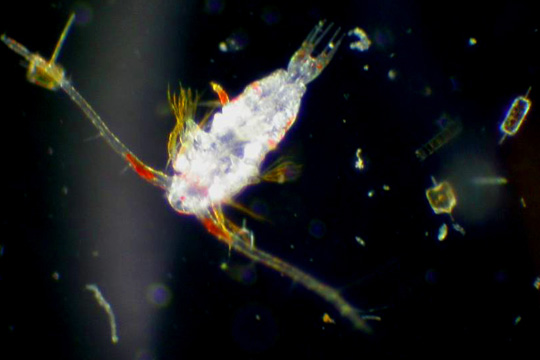WU professor leads NASA project involving phytoplankton
March 15, 2011
Two years ago, the National Aeronautics and Space Administration approved a grant proposal for the Washburn department of physics and astronomy.
It’s been quite an experience so far.
The grant gave $500,000 to Brian Thomas, assistant professor in the physics and astronomy department for a study that took place over the last two years and will go on into the next year.
He has worked in collaboration with Adrian Melott, professor of physics and astronomy at the University of Kansas, and Patrick Neale, senior scientist with the Smithsonian Environmental Research Center in Edgewater, Md.
The project involves studying the effects on marine phytoplankton when the Earth receives a blast of radiation from events such as supernovae and gamma-ray bursts. The project will also assist in understanding how phytoplankton are affected by current ozone depletion, such as under the Antarctic ozone hole.
Marine phytoplankton are single-celled plants that are the basis of the food chain in the ocean, according to Thomas. They produce half of the world’s oxygen.
Thomas said the work he has done in the past is looking at effects on this kind of life form through astrophysical radiation sources.
“What I am doing is taking some of the past work that I have done and combining it with Patrick Neale’s results and some new modeling in order to bridge the gap of what we think might happen,” said Thomas.
Thomas said that he is the only faculty at Washburn working on this project but he has had several students in the past working on this project as well.
“A former student who just graduated, Keith Arkenberg, was working on the effects of a solar flare on the Earth, which is one of the kinds of events that we look at,” said Thomas.
Thomas said that they have produced a paper that looks at different kinds of events that would be important.
“Melott is the primary author on the events,” said Thomas. “We basically have a big long list of different kinds of sources of radiation. We are starting to get some pretty solid lab results killing the phytoplankton, we are at the point now where I’ve been working to get all the numerical models put together.”
Thomas said the way grants work through NASA is they put out an announcement about what kind of project they are looking for. A person writes up a proposal on what they will do, who they will work with and how much money they will need. The person then sends it off and it goes off through a review process.
“I was pretty excited when I found out I was chosen to lead this project,” said Thomas. “This particular proposal was kind of my third draft because I had sent in a couple previous proposals similar and the first couple of times I kept getting a review back and they would tell me what was good and what wasn’t.”
Thomas said that their main goal in the next year is they are hoping to wrap things up.
“We have most of the astrophysics stuff done with the project and the next part is putting all the different pieces together, the modeling of the effects on the Earth and taking that and putting it with the new biology data and we will basically create a paper discussing the results and I will be producing maps showing how the effects vary in different locations overtime,” said Thomas.



